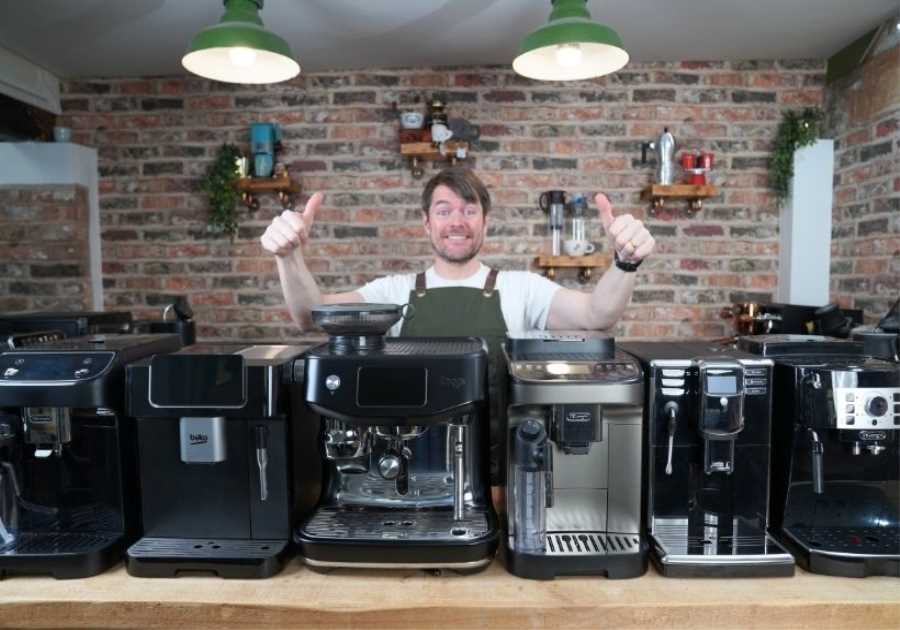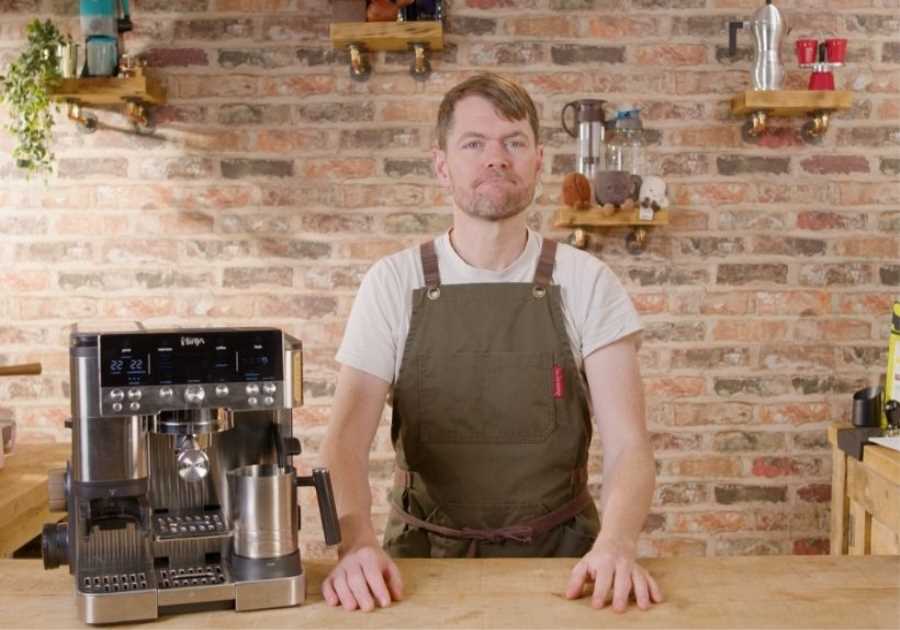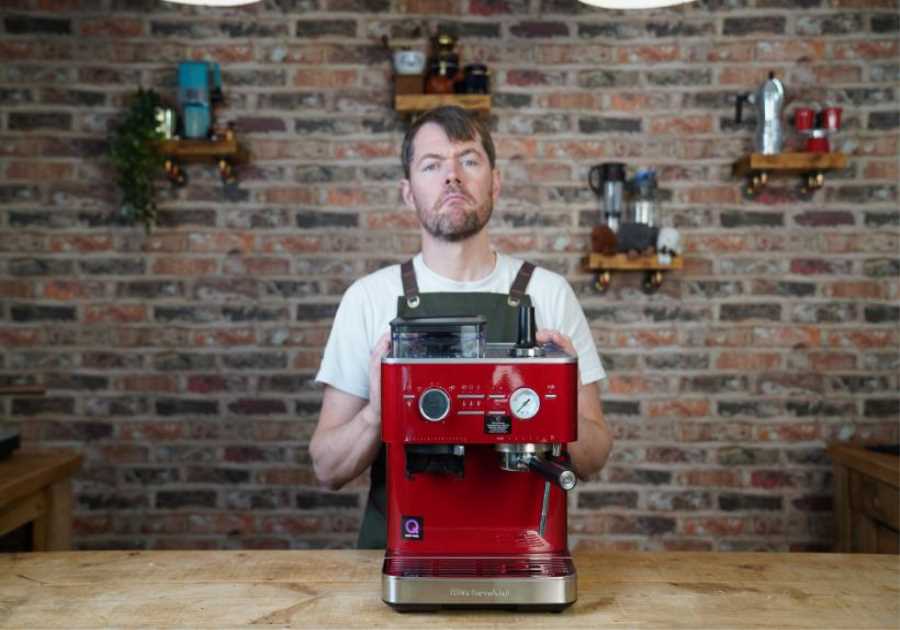Pulling café-quality espresso shots is a goal for home baristas all around the world. For many, however, choosing the right equipment is a key challenge. Without it, your espresso extraction will fall short time and time again.
And while many consumers think that a high-end espresso machine can guarantee them delicious coffee, it isn’t that simple. Without a good, consistent grinder in your home barista setup, you will struggle to make coffee shop quality espresso.
Over the past few years, the market for home coffee grinders has changed drastically. Cost-effective and high-calibre equipment has become more and more accessible for home consumers seeking greater precision.
To learn more about home coffee grinders and how you can grind for espresso at home, I spoke to two coffee professionals. Read on to find out what they said.
You may also like our beginner’s guide to tasting espresso.
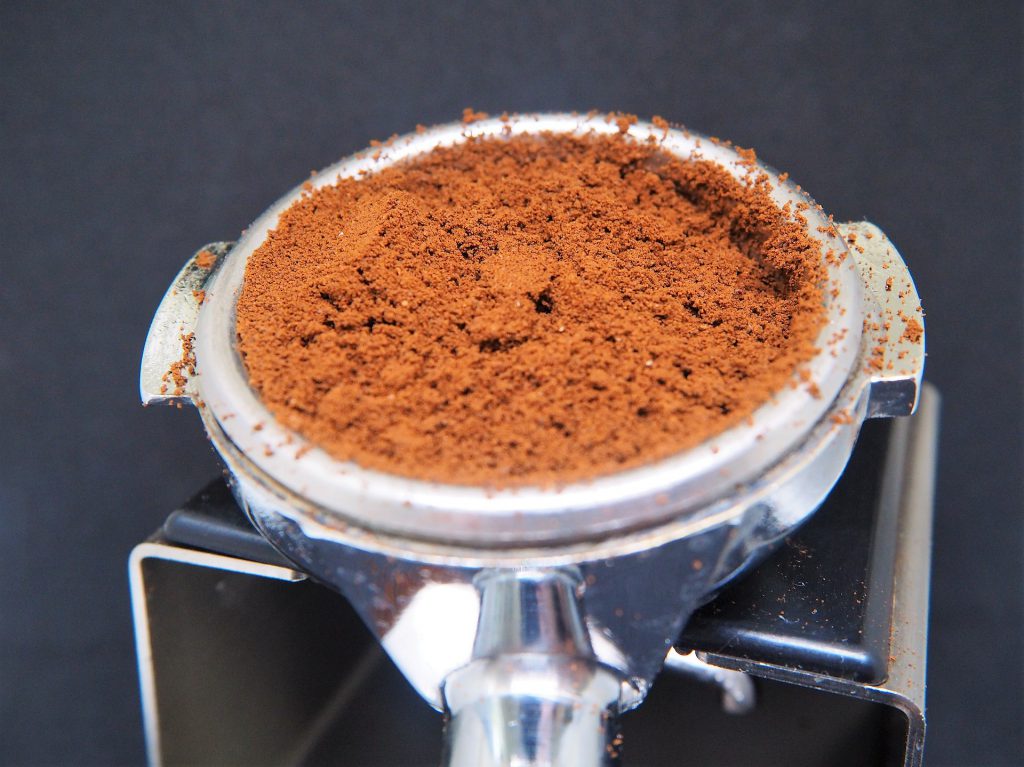
Why is it so tough to get great espresso at home?
Extracting espresso is fundamentally different to most other coffee brewing methods. This is because you have a much smaller water-to-coffee ratio, and are preparing a highly concentrated beverage in a matter of seconds, rather than minutes.
These two parameters mean the coffee needs to be ground much finer if you’re going to properly extract the delicate flavours and aromas from your beans.
Replicating the coffee shop experience at home has become much more of a focus in recent times. Home coffee consumption rose exponentially in 2020, thanks in no small part to the Covid-19 pandemic.
The NCA’s 2021 National Coffee Data Trends report found that nearly a third of US coffee drinkers have attempted to replicate a café-style beverage at home in the last 12 months. To this end, more than 20% purchased new home coffee machines.
However, while the machine is often viewed by home consumers as the most important piece of equipment for making espresso, it is important that is paired with a consistent, precise grinder.
A high-quality espresso machine paired with a lower-quality, inconsistent grinder that can’t achieve the right grind size will be unable to produce quality espresso.
Coffee shops and roasters tend to use commercial grinders that can easily grind coffee consistently at this fine size, but they are large, expensive, and heavy pieces of equipment. This makes them inaccessible for the vast majority of home baristas.
Furthermore, while good-quality hand grinders can be used for an espresso grind, this can take several minutes rather than a few seconds, and requires a lot of manual effort from the consumer.
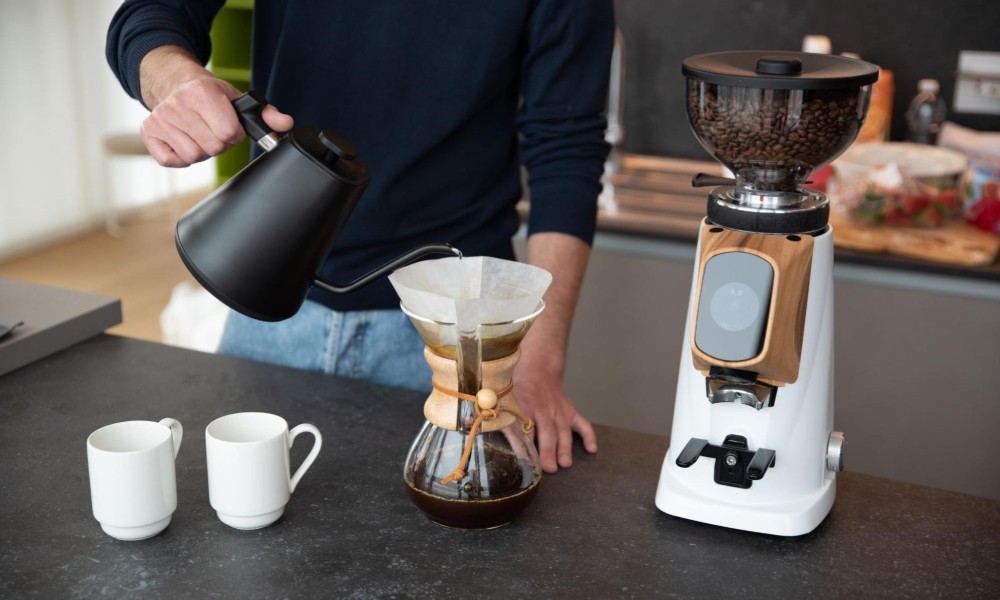
Espresso grind size & extraction
Grinding for espresso is a challenge for many home baristas. However, before we look at how you can grind for espresso at home, we need to understand why it’s so important.
Marzia Viotti is a Technical Trainer at Fiorenzato. She works closely with the company’s R&D team to provide a barista perspective on new product development.
She says: “Extraction time is strictly connected to grind size, among other variables. If the espresso takes [too long] to brew, you need to grind [the] coffee coarser. If the espresso is brewing too fast, [then] grind finer.
“[Grind] size is one of the key elements for good extraction,” she adds. “Unfortunately, there is no one-size-fits-all solution; each method needs its own grind size.”
As you grind finer and finer, you increase the surface area of your ground coffee. This means that you can extract more from each coffee particle in a shorter period of time. The optimum brew time for a single shot of espresso is somewhere between 20 and 30 seconds, so you don’t have much margin for error. This means that finding the right grind size is key.
If you grind too coarse, you risk underextraction, leading to watery and sour flavours in the cup. Too fine, however, and you might end up with overextracted espresso. A finer grind size also increases the likelihood that channelling will occur in the coffee puck; this is where water finds the path of least resistance within the coffee bed, creating a “channel” and leading to a combination of under and overextraction.
Grind size is the first variable a home barista should consider when dialling in espresso. The best way to tweak it is to use a precise, consistent, high-end home grinder. One such example is the AllGround, the latest model from Fiorenzato’s Home range.
“[The AllGround] has a new style ring nut [that is] easy to move,” Marzia explains. “It has three different areas marked [out] to guide the user in selecting the right grind size for espresso, moka pot, or filter.
“[As you change or tweak the grind size], the touchscreen changes and follows too.”
Connecting the grind setting collar with the touch screen interface creates a more accessible and user-friendly experience. This allows home baristas to better understand and track the grind changes they make – subsequently leading to better, more evenly extracted espresso.
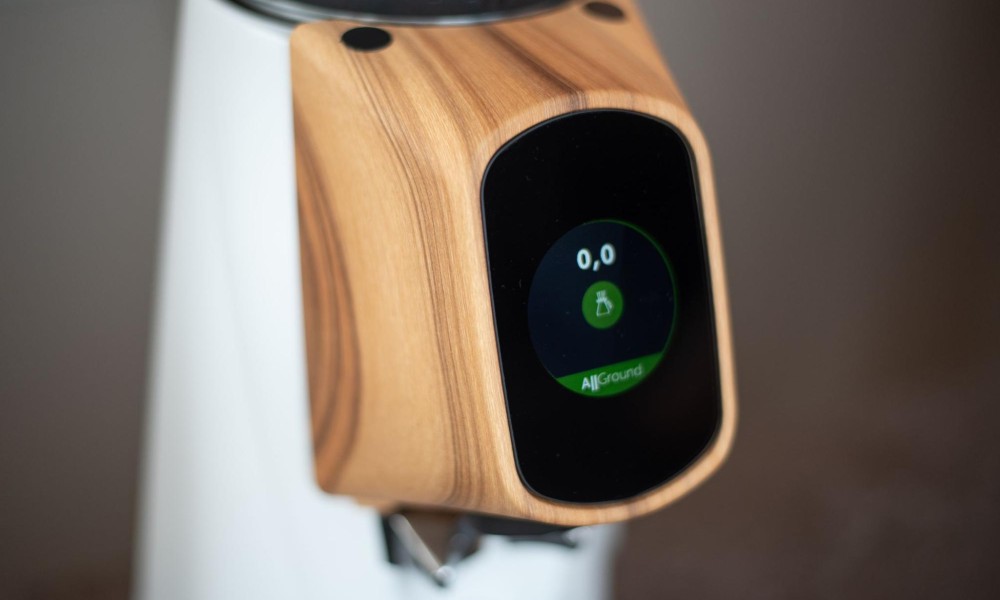
Why is consistency so important for espresso?
Ollie Sears is the Wholesale Manager at North Star Coffee Roasters in Leeds. He tells me more about why consistency is so important for espresso extraction.
“Consistency in grind size is important for maintaining high-quality flavour, [and making this] a reliable, repeatable possibility.
“It becomes very difficult to repeatedly make great espresso if the weight [or texture] of each coffee ground is not at an adequate level of consistency.”
Consistency throughout the entire process is essential, but grind size is one of the most important factors.
It’s almost impossible to ensure that every ground coffee particle is completely identical in size. However, if you have too much variation in the puck with larger and smaller-sized particles, then it will lead to unbalanced espresso that is both sour and bitter-tasting – signs of both under and overextraction.
Marzia tells me how high-quality grinders help to combat this. “Having a [consistent] grinder is critical for achieving delicious [espresso] at the same quality day after day,” she tells me.
“Well-designed burrs ensure a low amount of fines and a [higher] number of [evenly-sized] particles to ensure more flavour and intensity.”
A good grinder also helps home baristas to dial in their espresso. Dialling in is the process of finding the “sweet spot” of a coffee when extracting it: searching for the delicate balance of acidity, sweetness, bitterness, and body by making incremental tweaks to your brewing variables.
With a high quality grinder, home baristas have more control over the smaller incremental changes they need to make to their grind size. In time, this will make it easier for them to find the right profile for their espresso.
“[You can] achieve a bespoke flavour preference and target it repeatedly,” Ollie explains.
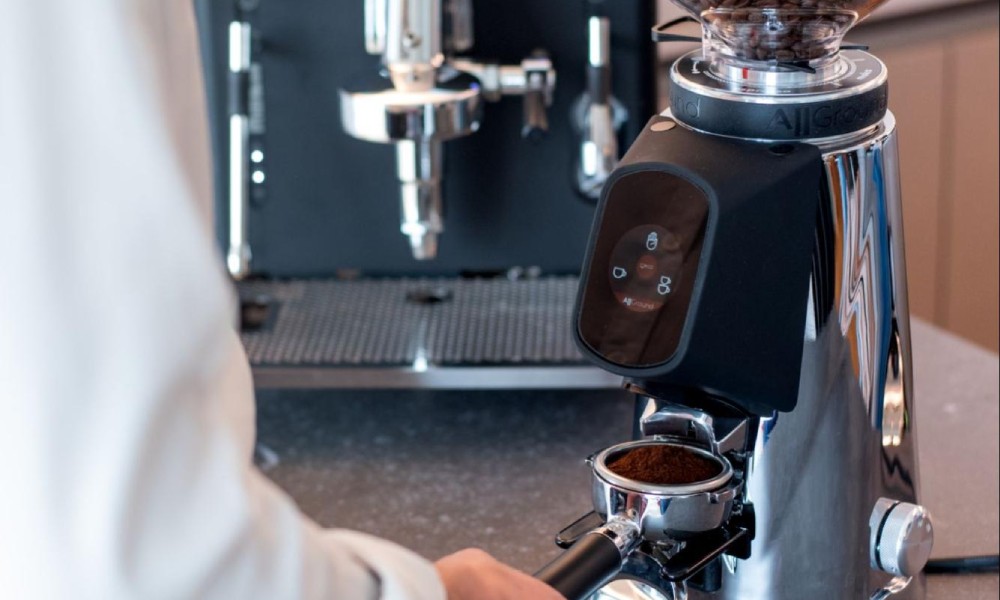
Higher-quality burrs in home grinders
So, we know why consistency and precision is so important when it comes to grinding for espresso at home. But how do we improve this?
The simple answer? Use high-quality grinders that have high-quality burrs. “High quality burrs are important for the grinding process,” Ollie says. “They produce an [even] distribution of ground coffee particles.”
There are two types of burrs: conical burrs and flat burrs. Conical burr sets consist of a lower ring-shaped burr and an upper cylindrical burr. Coffee beans are ground between the two, and the grounds fall down the chute and into a bin or portafilter below.
In contrast, flat burr sets consist of two ring-shaped burrs, and are often recognised as being more consistent.
“The AllGround’s flat burrs are made of food-grade M340 steel,” Marzia says. “They are 64mm in diameter, which guarantees a larger grinding surface, and avoids damaging the beans.”
She adds that Fiorenzato developed the burrs in-house with a specific focus on maximising quality. According to Marzia, the R&D team used data on the optimum coffee particle size and distribution for each brewing method during the design process.
Marzia adds: “The titanium coating ensures more durability, as they can grind up to 1,400 kg of coffee (unlike uncoated grinders [which can] grind up to 400 kg).”
Metal burrs are also designed to absorb more heat as they spin, meaning that the temperature of the beans stays stable during grinding. The titanium coating on the burrs means they last much longer before needing to be replaced.
While typically, flat burrs are criticised for retaining grounds after grinding (anywhere from 1 to 12g), Marzia says that the AllGround’s design minimises grind retention.
“The AllGround’s internal burr set doesn’t hold onto much coffee,” she says. “What you see while brewing is not the result of your grind setting from a previous day.”
Marzia also notes that they were designed to be removable for user-friendly cleaning. Cleaning your grinder burrs is important, as it allows you to remove stale grounds and residual coffee oils. If left uncleaned, these can affect the flavours in your cup.
“The easy-open button allows [the user] to open and quickly clean the [internal] grinding chamber,” she explains.
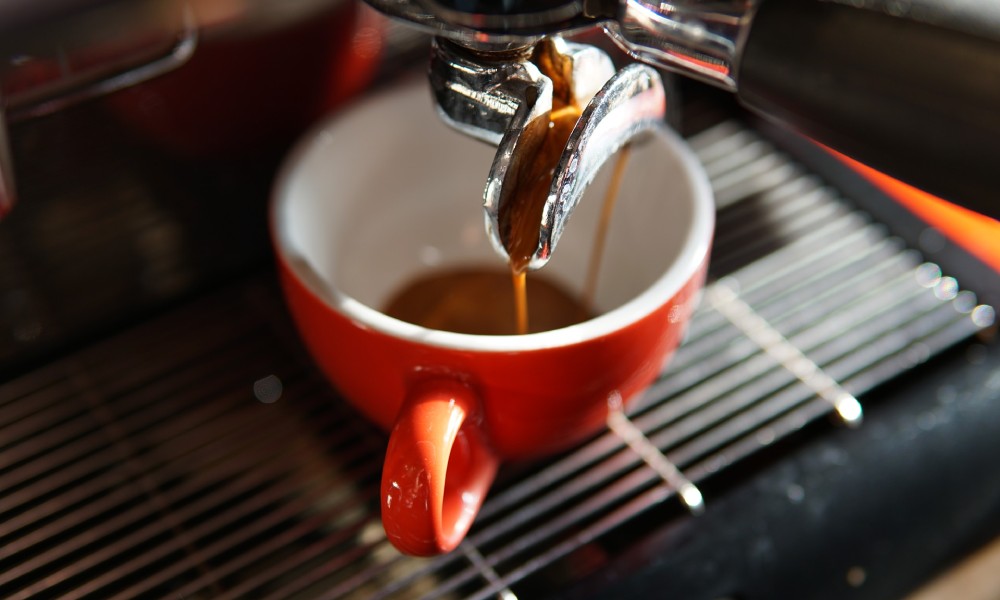
Some tips for dialling in espresso at home
For home baristas with less experience, extracting espresso can be intimidating, but Marzia compares the process to following a recipe. “You buy the ingredients and start reading the recipe,” she says. “The recipe usually mentions grams, millilitres, cooking time, and so on. The same is true of espresso.”
While every coffee is unique and will need the user to experiment to find the right setting, Marzia advises using a set dose for light and medium roasts: “I suggest [using] 17 or 18 grams of freshly ground coffee in the portafilter – a scale is mandatory to allow consistency.
“The liquid inside the cup should be 2 times or 2.5 times the weight of the ground coffee. Using 17 grams of ground coffee at a ratio of 2.5:1 will be 42.5 grams of liquid in the cup, for example.”
Measuring and tracking all of your brewing variables will make dialling in more manageable and replicable. Recording data supports the home barista to learn more about which factors need to be tweaked to improve extraction.
“Time your extraction and weigh how much coffee you use from the grinder,” Ollie says. “And weigh the liquid you brew into the cup. This will help you track what you like or dislike when you do try anything different.”
Good puck preparation can also improve the taste and mouthfeel of espresso. “Distribute your ground coffee evenly in the [portafilter] before tamping to improve your chances of making evenly brewed, balanced espresso,” Ollie recommends.
He also stresses the importance of making small incremental adjustments to your grinder when changing your grind size.
“Be patient with grinders,” he tells me. “When you make a change, you might not necessarily ‘see’ the results of that change [immediately].”
Purging grinders with between 5 and 10g of coffee after every grind size change helps to ensure that the next shot you pull will work at the exact grind setting you have chosen.
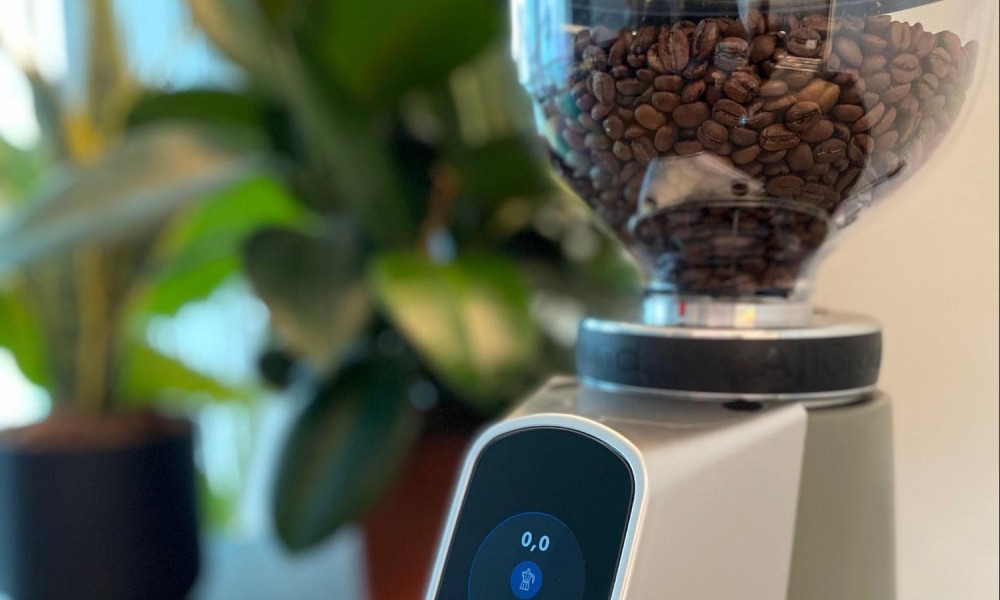
Ultimately, making great espresso at home is about finding what works for you. Dialling in might seem like an arduous, intimidating process, but with practice and good quality equipment, it can become a highly rewarding experience.
By focusing on achieving a precise, consistent, and replicable grind size, you can commit to elevating the quality and consistency of the shots you pull.
Enjoyed this? Then read our updated guide to buying home espresso machines.
Photo credits: Fiorenzato
Perfect Daily Grind
Please note: Fiorenzato is a sponsor of Perfect Daily Grind.
Want to read more articles like this? Sign up for our newsletter!
The post Grinding for espresso at home appeared first on Perfect Daily Grind.
By: Tasmin GrantTitle: Grinding for espresso at home
Sourced From: perfectdailygrind.com/2021/05/grinding-for-espresso-at-home/
Published Date: Mon, 17 May 2021 05:45:00 +0000




